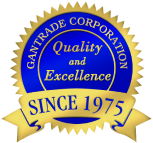Epoxy resins are a highly versatile class of multifunctional reactive intermediates that are crosslinked into three-dimensional networks with curing agents or “hardeners” such as multifunctional amines, carboxylic acid anhydrides, and phenolic resins. When cured, the resulting thermoset materials are formed without the generation of volatile by-products. This results in void-free cured parts, which is particularly important in thick structures.
The combination of high-performance capabilities and good processing characteristics has led to the use of epoxy resins in a broad array of applications, including coatings, adhesives, matrix resins for composites and circuit boards, encapsulation, and aircraft/aerospace components, to name a few.
There are many types of epoxy resin intermediates. Commercially, the bisphenol A diglycidyl ether epoxy resin family (BADGE) dominates and account for over 65% of the market.
Major performance attributes of epoxy resins include outstanding high-temperature properties, high strength, excellent chemical and water resistance, good adhesion to multiple surfaces, toughness, and durability. The many options for processing epoxy resins allows utilization in a myriad of applications.
Major market areas for epoxy resins
The major market segment for epoxy resins is paint and coating for heavy duty service, representing approximately 40% of the end-use volume. This is followed by adhesives, composites (including wind turbine blades), electrical/electronics, and construction. The global epoxy resin market volume is estimated to be about 3,100,000 MTs in 2022, with a CAGR projected at 5.5% in the next five-year period. The chart below shows the breakdown of the epoxy resin market by application.

Major epoxy resins types
The workhorse epoxy resins are the bisphenol A diglycidyl ethers (BADGEs), offered in both liquid and solid forms. Liquid forms represent about 65% of the volume of BADGE consumption. They are available in low, medium, and high viscosity grades, varying in MW. The viscosity and, ultimately, the transition from a liquid to a solid increases as the molecular weight (value of n) increases for the epoxy resin.

Bisphenol F resins have most of the attributes of BADGE, but offer lower viscosities, better processing characteristics based on the lower viscosities, and better chemical resistance. Bisphenol F resins are used in chemical-resistant coatings, adhesives, composites, and electrical/electronic applications.
Epoxy novolac resins offer excellent heat, fire and chemical resistance, and hardness. This category includes phenol-novolac resins, o-cresol-novolac resins, and bisphenol A-novolac epoxy resins. They have multi-functional backbone structures. Major applications take advantage of the heat, fire, and chemical resistance, such as the automotive sector, high-temperature composites, and adhesives.
The aliphatic epoxy resins category includes hydrogenated bisphenol A epoxy resins, cycloaliphatic epoxy resins, and diglycidyl ethers of diols such as butanediol, hexanediol, etc. The latter category of diol epoxy resins are primarily employed as reactive diluents for viscosity reduction. The cycloaliphatic epoxy resins are a special class of non-glycidyl epoxy resins available from Daicel Corporation. They are easily cured with anhydride hardeners or UV activated cationic catalysts. All aliphatic epoxy resins offer UV weathering resistance and transparency, and low viscosities. The cycloaliphatic epoxy resins have very low chloride contents and excellent electrical/electronic insulating properties.
The total market size for epoxy resins is approximately 3,100,000 MT in 2022 with a CAGR of about 5.5%. An estimated distribution of global market shares by the epoxy type is shown in the chart below. The other category consists of brominated epoxy resins and high-functionality glycidyl amines, etc.

Shown below are various commercial grades of the key epoxy resin categories shown by the major categories. The product line below is produced by Chang Chun Petrochemical and marketed by Gantrade Corporation.
Liquid Bisphenol A Epoxy Resins

Solid Bisphenol A Epoxy Resins

Liquid Bisphenol F Epoxy Resins

Liquid Phenol Novolac Epoxy Resin

The epoxy resins above are available in 220 Kg. drums, 17.6 MT per FCL; 1 MT IBC totes, and 20 MT ISO Tanks, delivered heated.
Epoxy hardener categories
The types of hardeners that can be used for epoxy resins include aromatic amines, aliphatic amines, cycloalipathic amines, novolacs, anhydrides, polyamides, polyamido-amines, and polymercaptans (thiols). An indication of the market shares for the various type of hardeners is provided below.

Mutifunctional amines
Mutifunctional amines represent the largest segment based on offering high Heat Distortion Temperatures (HTDs >150 °C), high thermal and chemical resistance, excellent mechanical properties, and well-controlled cure rates. Because of the wide diversity of amine curatives available, the breadth of performance imparted by amine hardeners is unmatched. Their major industry segments include composites, heavy-duty flooring, syntactic foam, and other performance applications.
Aliphatic amines
Aliphatic amines offer faster cure rates and lower cure temperatures. Aliphatic amine curatives include polyether amines, ethyleneamines such as DETA, TETA, etc, and cycloaliphatic amines such as PACM – H12MDI. Exemplary aromatic amines include DETDA, MBOEA, and other substituted methylene dianiline derivatives.
Novolac resins
Novolac resins react with epoxy resins at higher temperatures in the presence of a catalyst to form ether linkages. The resulting structures display excellent thermo-oxidative and chemical resistance vs. epoxies cured with amines or anhydrides. This class of hardeners is used in powder coatings as many novolacs are solids.
Anhydrides
Anhydrides are low-viscosity hardeners exhibiting high latency and low exotherms in epoxy cure, and excellent mechanical and dielectric characteristics. This makes anhydride cured epoxy resins suitable for applications such as potting and bonding of electrical components, high voltage transformers, switches, resistors, and capacitors, intergrade circuit impregnation, and casting. Other applications are in fiberglass-reinforced parts. Methyltetrahydrophthlic anhydride (MTHPA) is an exemplary anhydride hardener.
Polyamides
Polyamides are primarily used in coatings and adhesives where they provide good adhesive characteristics, toughness, flexibility, chemical and water resistance, and longer pot lives. Polyamide hardeners are amine functional, produced by the condensation of di- and polybasic acids with diamines. Applications include anticorrosion coatings, for example, with storage tank linings and structural adhesives.
Mercaptan
Mercaptan end-functional curatives afford fast cure times. Gel times can be under one minute at ambient temperatures. Thiol cured epoxy resins are known for excellent resistance to acids, bases solvents, and good transparency. Applications include coatings, adhesives, sealants, patching compounds, cementitious repair, and road marking paints.
Calculating the epoxy resin - hardener ratios
The epoxy resin and the hardener or curing agent should be mixed and reacted at approximately equivalent (1:1) stochiometric levels with the epoxy resin to obtain optimum properties. Weight ratios are usually expressed in parts of hardener per 100 parts of resin. To calculate the required ratio of hardener to epoxy resin, first calculate the hardener equivalent weight. For amines hardeners, this is related to the number of active hydroxy atoms on the primary amine moieties. Standard diamine hardeners have functionalities of four (4).

The amount of amine hardener required is calculated by first referencing the EEW (epoxy equivalent weight) of the epoxy resin(s) from the supplier, including any reactive diluent that might be incorporated. Thereafter, apply the equation below to determine the weight of amine hardener to use with 100 parts of the reactive epoxy resin(s) component.

Adding too much of either resin or hardener will alter the cure time and chemical reaction, and the mixture will not properly cure.
For more information on epoxy resins and critical selection criteria, please contact Gantrade today.

















